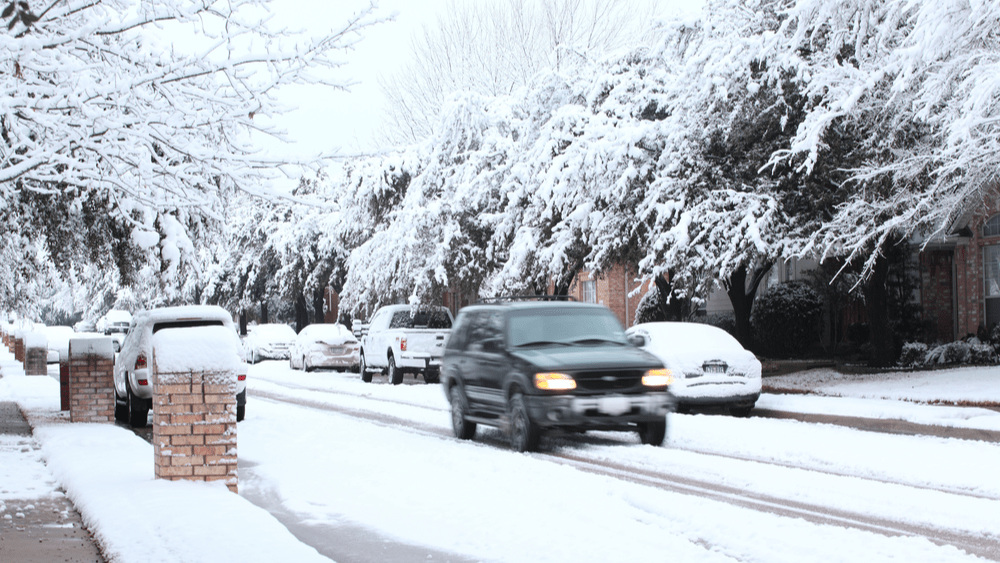
FRANKFORT, Ky. – As Kentuckians soak in the final views of falling leaves, state transportation crews are on the lookout for the first sight of snow to spring into action. Nearly 2,100 Kentucky Transportation Cabinet (KYTC) staff and crew members have been preparing for months for the November launch of snow and ice season when crews are on standby to maintain travel on state routes once winter weather strikes.
“As we round out the final months of the year, state road crews are on high alert to serve Kentuckians when winter weather inevitably appears,” said Gov. Andy Beshear. “We all have a part to play to ensure the people providing these essential services are protected by masking up, getting vaccinated and giving them plenty of room on the roads when they are out.”
Over the course of months, crews have been trained, statewide salt and road treatment supplies restocked, plow trucks serviced and contingency plans for quarantined crews finalized. A fleet of more than 1,365 state-owned and contracted plow trucks are ready to respond when the weather warrants it.
“Within the past 12 months we endured our first snow and ice season in the midst of a health pandemic, and tackled back-to-back severe winter events this year that blanketed roads with sheets of ice and debris,” said KYTC Secretary Jim Gray. “While the severity and frequency of weather events stands to be unknown, we are doing our best with the resources we have to keep critical state routes passable so citizens and commerce can keep moving.”
KYTC has doubled its fleet of tow plows, which can clear two lanes at once. The cabinet has eight tow plows around the state this year, up from four last winter. Two of the plows will be based in Frankfort with a KYTC strike force that can be dispatched to lend support to crews in different regions during major weather events. Tow plows are ideally suited for use on high-priority routes that have wide lanes.
The Cabinet has stockpiled over 300,000 tons of salt, 1 million gallons of brine for anti-icing efforts and 875,000 gallons of calcium chloride, an additive to salt for deicing.
KYTC uses a three-tier system to prioritize treatment and snow clearing on state-maintained routes. Route designations are based on factors such as traffic volume and connectivity to critical services, like hospitals. During routine snow and ice events, crews operate using snow and ice priority route maps for maximum efficiency of equipment and materials usage. For severe winter storm events, the Cabinet has established a snow emergency plan to deploy resources within each county as needed to cover highest priority routes.
“Fewer moments highlight the role transportation plays in staying connected quite like snow and ice season,” said State Highway Engineer James Ballinger. “While we stand ready, extreme weather conditions and workforce impacts beyond our control may impact our response times and we will shift resources to ensure traffic can move safely on key routes that provide access to life-saving services and maintain cross-county travel.”
KYTC maintains most roads, streets and bridges that are part of the State Highway System. Examples include interstates, parkways and U.S. route designations.
Keep Kentucky Moving Safely
Safe roadways are a shared responsibility, especially during inclement weather when risks increase. KYTC encourages motorists to prepare for winter and remain safe by following these tips:
- Travel only as necessary during major snow events.
- Stock vehicles with ice scrapers, jumper cables, blankets, a flashlight, cell phone charger, non-perishable snacks and first aid kit should you get stranded on the road.
- Winterize vehicles. Have your car battery, tire pressure and brakes checked. Make sure your heater, defroster, headlights and windshield wipers are working properly.
- When snow and/or ice are on roadways, drive slowly no matter what type of vehicle you’re in. It takes more time and distance to stop your vehicle in poor weather conditions, so brake early and slowly.
- Pay attention to weather advisories and allow more time to travel for routine commutes.
- Slow down when approaching intersections, off-ramps, bridges or shaded areas. These are all candidates for developing black ice—a thin coating of clear ice that can form on the pavement surface that may be difficult to see.
- Maintain a safe distance from snowplows and other heavy highway equipment and do not pass snowplows on the shoulder.
- Know before you go. Download the free WAZE app or visit goky.ky.gov to check traffic conditions before you travel. The map also offers access to select traffic cameras on interstates and parkways.
- Eliminate distractions while driving (e.g. using phone and eating).
Visit snowky.ky.gov for snow and ice resources, like priority route maps, tips and highway district updates.




